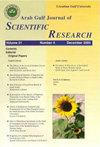Business network and balanced scorecard: an analysis of small and medium enterprises in Malaysia
Q4 Business, Management and Accounting
引用次数: 0
Abstract
PurposeThe aim of this paper is to characterise the association between business network and the balanced scorecard used by Malaysian small and medium enterprises (SMEs) as a method for assessing firm efficiency. The business network takes into account both the dimensions of stability and efficiency. The business network can help SMEs, with fewer resources to remain competitive. By having a secure business network, the performance of SMEs in Malaysia can be further improved. A business network can facilitate swift coordination amongst distant geographies to create new competitive advantages by accessing market segments, resources as well as building strategic business alliances.Design/methodology/approachA total of 404 sets of data collected by using stratified random sampling and structured questionnaire as an instrument. The list of SMEs collected from the Malaysia Foreign Trade Growth Corporate Directory (MATRADE) directories. Structural equation modelling (SEM) was utilised to analyse the data.FindingsThe findings show that the business network plays a role in the balanced scorecard (BSC) outcomes of Malaysian SMEs.Originality/valueThis article provides the owners and managers with an awareness to rapidly achieve the company's efficiency. Finally, the new article often has some consequences for decision-makers and regulators.商业网络与平衡计分卡:马来西亚中小企业分析
目的本文的目的是表征马来西亚中小企业(SMEs)使用的商业网络和平衡计分卡之间的关联,作为评估企业效率的方法。商业网络兼顾了稳定性和效率两个维度。商业网络可以帮助资源较少的中小企业保持竞争力。有了一个安全的商业网络,马来西亚中小企业的表现可以进一步改善。商业网络可以促进遥远地区之间的迅速协调,通过获取细分市场、资源和建立战略商业联盟,创造新的竞争优势。设计/方法/方法采用分层随机抽样和结构化问卷作为工具,共收集404组数据。中小企业名单收集自马来西亚外贸成长型企业名录(MATRADE)目录。利用结构方程模型(SEM)对数据进行分析。研究结果表明,商业网络在马来西亚中小企业的平衡计分卡(BSC)结果中发挥了作用。创意/价值本文为业主和管理者提供了一种快速实现公司效率的意识。最后,新文章通常会对决策者和监管者产生一些影响。
本文章由计算机程序翻译,如有差异,请以英文原文为准。
求助全文
约1分钟内获得全文
求助全文
来源期刊

Arab Gulf Journal of Scientific Research
综合性期刊-综合性期刊
CiteScore
1.00
自引率
0.00%
发文量
0
审稿时长
>12 weeks
期刊介绍:
Information not localized
 求助内容:
求助内容: 应助结果提醒方式:
应助结果提醒方式:


